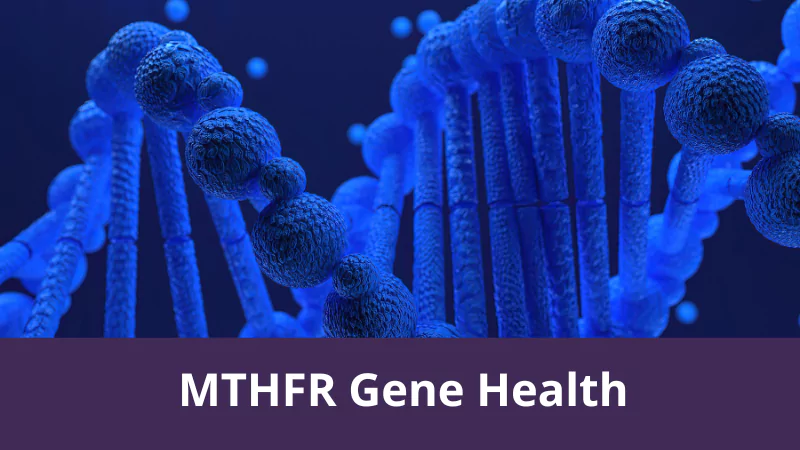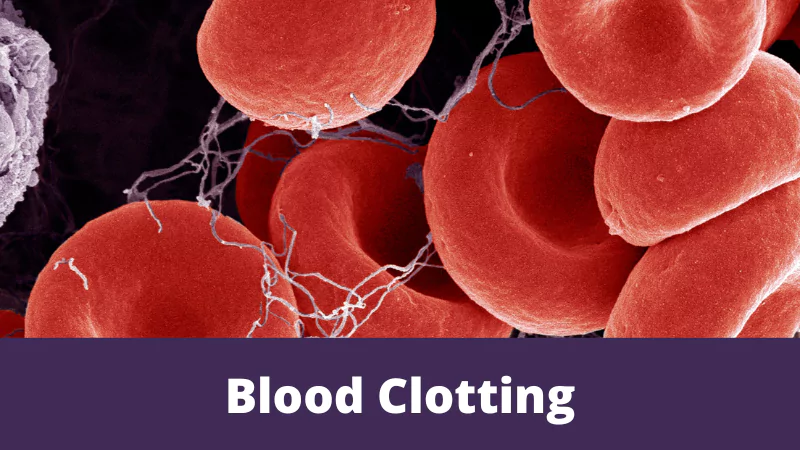What is Chronic fatigue?
Chronic fatigue is a condition characterized by mental as well as physical tiredness and weakness over a long period of time, which is unaffected by taking rest. It results from irregularities in cellular metabolism and inefficient energy production.
Here we discuss one of the factors that may be associated with chronic fatigue- mutation in MTHFR gene that severely affects cellular and mitochondrial functions.
Mitochondria: Energy producing factory in the cell
Mitochondria are comparments within the cell that produce energy in the form of adenosine triphosphate (ATP) through a pathway called citric acid cycle.
Reduced forms of nicotinamide dinucleotide (NAD) and flavin adenine dinucleotide (FAD) are also produced during the cycle, which are further oxidized via the electron transport chain to produce more ATP. This oxidation may result in the formation of reactive oxygen species (ROS), which causes oxidative stress in mitochondria and contributes to the ageing-associated decrease in mitochondrial function.
MTHFR Gene
MTHFR gene, located on chromosome 1, encodes an enzyme – methylene tetrahydrofolate reductase. It exists as a pair of alleles, one inherited from each parent. There are variations in the DNA sequence (genetic polymorphisms) of this gene in the population. Two characterized variations (Single Nucleotide Polymorphism or SNP) are: C677T and A1298C. Genetic variations may lead to change in protein structure and reduced enzyme activity.
FREE Download What is MTHFR eBook
MTHFR is a crucial enzyme
MTHFR converts the dietary folate (vitamin B9) into active 5-methyltetrahydrofolate. It requires NADPH (nicotinamide adenine dinucleotide phosphate) and FAD (flavin adenine dinucleotide) as cofactors, which are produced in the mitochondria via the citric acid cycle.
MTHFR is also crucial for the methylation cycle that requires active form of folate as a methyl group donor.
MTHFR: Essential enzyme in the Methylation cycle
Methylation is the addition of methyl group to a substrate, catalyzed by enzymes called methyltransferases. It is a crucial reaction for the synthesis and activity of major biomolecules such as DNA, RNA, lipids, neurotransmitters, hormones and enzymes.
- MTHFR converts inactive form of folate into active 5-methyltetrahydrofolate, which provides the methyl group to homocysteine.
- Homocysteine is methylated to produce methionine, catalyzed by the folate- and vitamin B12-dependent methionine synthase (a methyltransferase).
- Methionine is further converted to S-adenosylmethionine (SAM) by methionine adenosyltransferase (MAT).
- SAM acts as the methyl group donor in methyltransferase-catalyzed reactions and becomes converted to S-adenosylhomocysteine (SAH), which is further metabolized back to homocysteine.
>>> Watch this webinar: Introduction to the Methylation Cycles Course 1
SAM acts as the major methyl donor to DNA, RNA, proteins, phospholipids, and neurotransmitters. Methylation reaction is crucial for the synthesis of many biomolecules such as phospholipids, carnitine, creatine, ATP, and myelin.
Transsulfuration Pathway
Through the transsulfuration pathway, homocysteine could also be converted to cysteine in the following steps:
- Homocysteine is converted to cystathionine catalyzed by CBS (cystathionine beta-synthase).
- Cystathionine is converted to the amino acid cysteine by cystathionine beta-lyase.
Cysteine is converted further into-
- Pyruvate, which enters the citric acid cycle involved in ATP production.
- Glutathione, which is the major antioxidant that protects against oxidative stress.
Consequences of MTHFR mutations
A mutation in MTHFR gene sequence may result in reduced enzyme activity and subsequent reduction in the availability of the methyl group. This affects the synthesis of biomolecules, resulting in dysregulated mitochondrial function and reduced ATP production (via citric acid cycle and electron transport chain):
- Phospholipids– Cellular membranes are composed of phospholipids, which consist of 2 fatty acids and a phosphate group attached to a glycerol head. Two major phospholipids in are phosphatidylethanolamine (PE) and phosphatidylcholine (PC). PE is methylated into PC by an enzyme called phosphatidylethonalamine N-methyltransferase (PEMT), which is associated with the mitochondrial membrane. MTHFR mutation reduces the availability of the methyl group, thereby impairing PC synthesis. This results in the deterioration of mitochondrial as well as cellular membranes.
- Coenzyme Q10: It is the main component of the electron transport chain, which generates ATP in mitochondria. Its synthesis is dependent on SAM as the methyl donor. Thus, MTHFR mutation affects Coenzyme Q10 synthesis and energy production.
- Carnitine: It is an amino acid derivative, synthesized from lysine and methionine in the liver and kidneys. It plays a crucial role in lipid metabolism by transporting acyl-chains of fatty acids to the mitochondria, where they are oxidized to produce ATP/energy. Reduced MTHFR activity reduces methionine synthesis, which further reduces carnitine synthesis. Therefore, energy is not adequately supplied to the cells resulting in fatigue.
- Oxidative Stress: Dysregulated mitochondrial activity results in accumulation of reactive oxygen species (ROS) causing oxidative stress, which downregulates the activity of redox-sensitive enzymes in the methylation cycle- methionine synthase, methionine adenosyltransferase and betaine-homocysteine methyltransferase.
- Depletion of glutathione: Chronic reduction in methylation and oxidative stress also deplete glutathione stores due to consumption by ROS. This reduces the ability to detoxify environmental stressors such as chemicals, heavy metals, bacteria and medications.
- Elevated homocysteine levels: Reduced activity of MTHFR and downregulation of methylation cycle enzymes result in accumulation of homocysteine, which is toxic to the cell causing cardiovascular diseases, blood clots, developmental delay, intellectual disability, eye disorders, weakness, and elevated levels of homocysteine in urine.
Creatine: It is a nitrogenous organic acid, also called methyl guanidine-acetate, produced from the amino acids glycine and arginine. It is synthesized in the liver and kidney and transported through blood to supply energy to all the cells in the body, mainly brain and skeletal muscle. Since methyl group is needed for creatine synthesis, mutation in MTHFR results in its deficiency, causing reduced energy levels and fatigue.
- Myelin: It is a fat-rich layer, composed of proteins and phospholipids, which insulates the neuronal axons. Phospholipids (PC) need methyl group for their synthesis, therefore, reduction of methyl groups due to MTHFR mutation results in disruption of myelin sheath and nerve functions.
Conclusion
If you have had fatigue for a long time, consider getting tested for the MTHFR gene mutations. Reduced MTHFR activity results in a series of consequences that are interrelated and ultimately result in chronic fatigue.
References:
https://www.ncbi.nlm.nih.gov/books/NBK6145/
https://www.ncbi.nlm.nih.gov/pubmed/15134582
https://www.ncbi.nlm.nih.gov/books/NBK66131/
http://link.springer.com/article/10.1007%2Fs12017-012-8174-1
https://www.ncbi.nlm.nih.gov/pmc/articles/PMC1974887/
http://www.lmreview.com/articles/view/beyond-the-mitochondrial-tune-up-part-ii/








